People can now see inside previously inaccessible spaces of Prague’s iconic Dancing House, including technical facilities, a new viewpoint and courtyard. Symbolically, it will celebrate the 30th anniversary of Václav Havel’s first idea to build a cultural house on the corner of Jiráskovo náměstí to serve the public, The first design by architect Croatian-Czech Vlado Milunić was made in 1990. Canadian-American architect Frank Gehry, most closely associated with the project, was brought in later.
Visitors can explore the Dancing House (Tančící dům) until August 31, 2020, daily from 10 am to 6 pm. Admission is included with a ticket to the current exhibition of glass art by Bořek Šípek.
In addition to the normally open gallery, and restaurant and bar with a view of Prague Castle, visitors can look into the air conditioning system, heating system and other infrastructure.
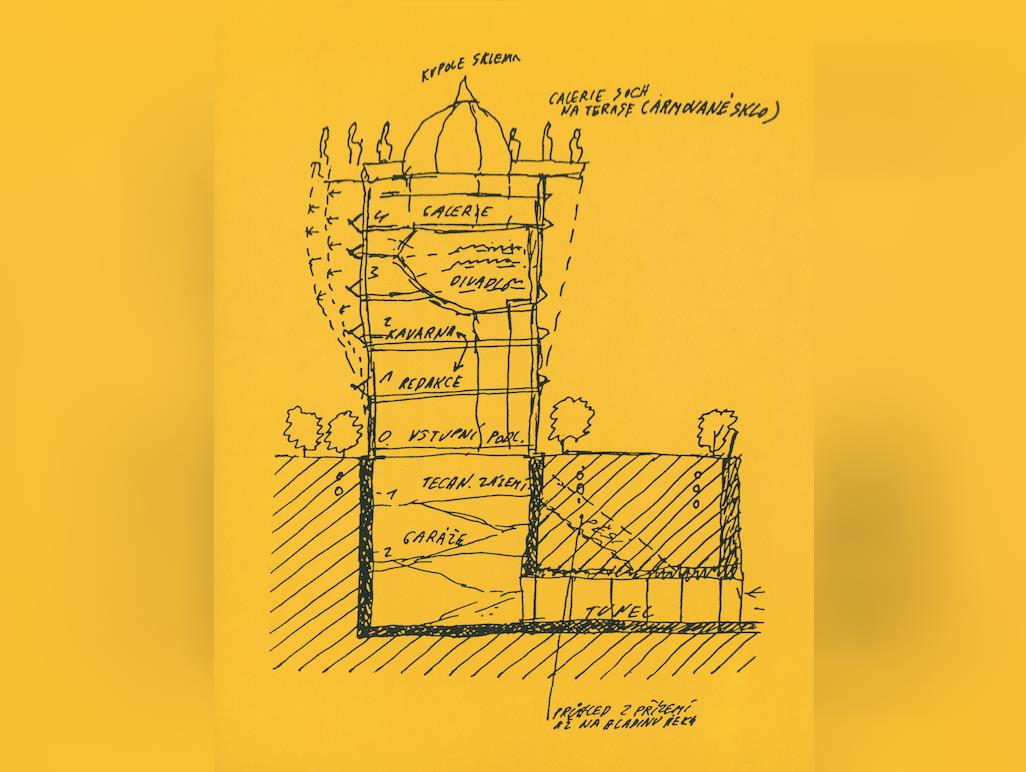
“The tour has a total of eight parts and begins on the second underground floor, where the engine room is, and ends on the roof. People will also be able to look into the hotel rooms, and we are also opening a new terrace with an unusual view of Prague Castle and a view of the courtyard of the apartment where former President Václav Havel lived for years,” Robert Vůjtek, director of galerie Tančící dům, said.
Václav Havel was instrumental in the creation of the building. He came up with the idea of building a house on the corner of Jiráskovo náměstí and Rašínovo nábřeží even before the Velvet Revolution.
The lot where the Dancing House was built had been empty since February 14, 1945. American bombers made a navigational error and mistook Prague for Dresden. A squadron of 40 B-17 Flying Fortresses dropped about 152 tons of bombs on residential areas. A neo-Baroque building had stood on the corner of Jiráskovo náměstí and Rašínovo nábřeží.
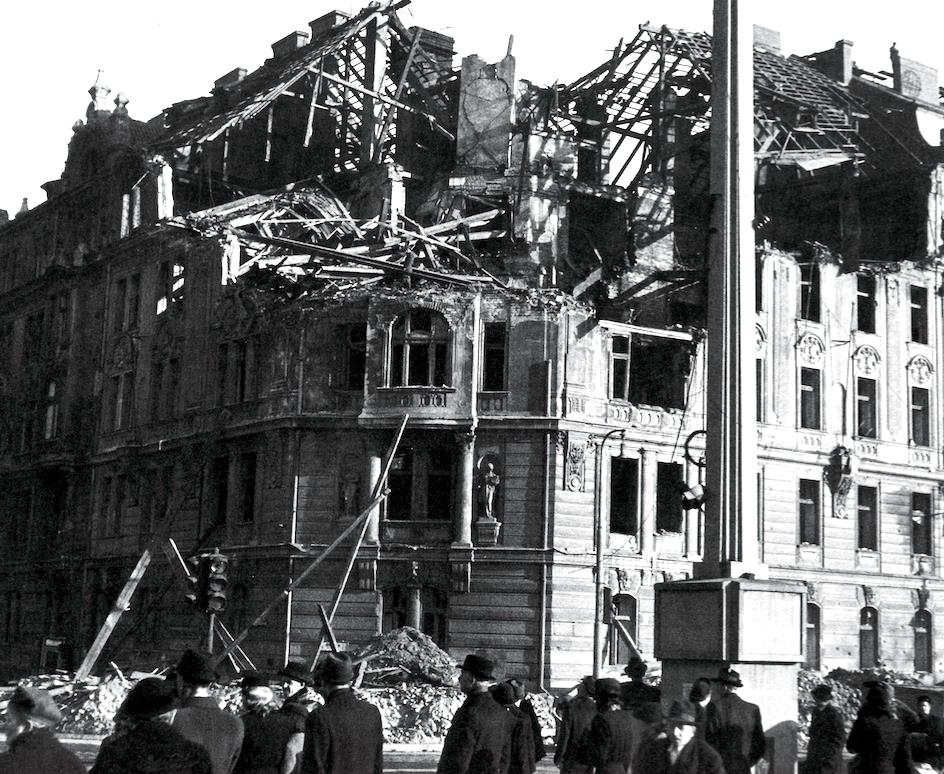
Havel was a part owner of the vacant lot, and he wanted to create an important landmark. The Havel family had long been involved in real estate. Havel’s grandfather, Vácslav Havel, built Palác Lucerna on Wenceslas Square. Vácslav’s son (and the president’s father) Václav M. Havel developed the residential Barrandov area of Prague, including the Barrandov Terrace, now unfortunately in ruins.
🌟 Customer Care Specialist FR – Prague 🌟

While Václav Havel was still a dissident writer in the 1980s, he discussed his ideas with architect Vlado Milunič. Havel wanted to create a library, café and theater, but could not find investors. This, though, led to the first concrete plans in 1990, after Havel became Czechoslovak president.
Havel wanted to put Prague back into the European culture scene. Havel promoted the idea of not only large concerts like the Rolling Stones, but also writers’ festivals and international conferences. The Dancing House would be the first significant example of modern architecture in the new era.
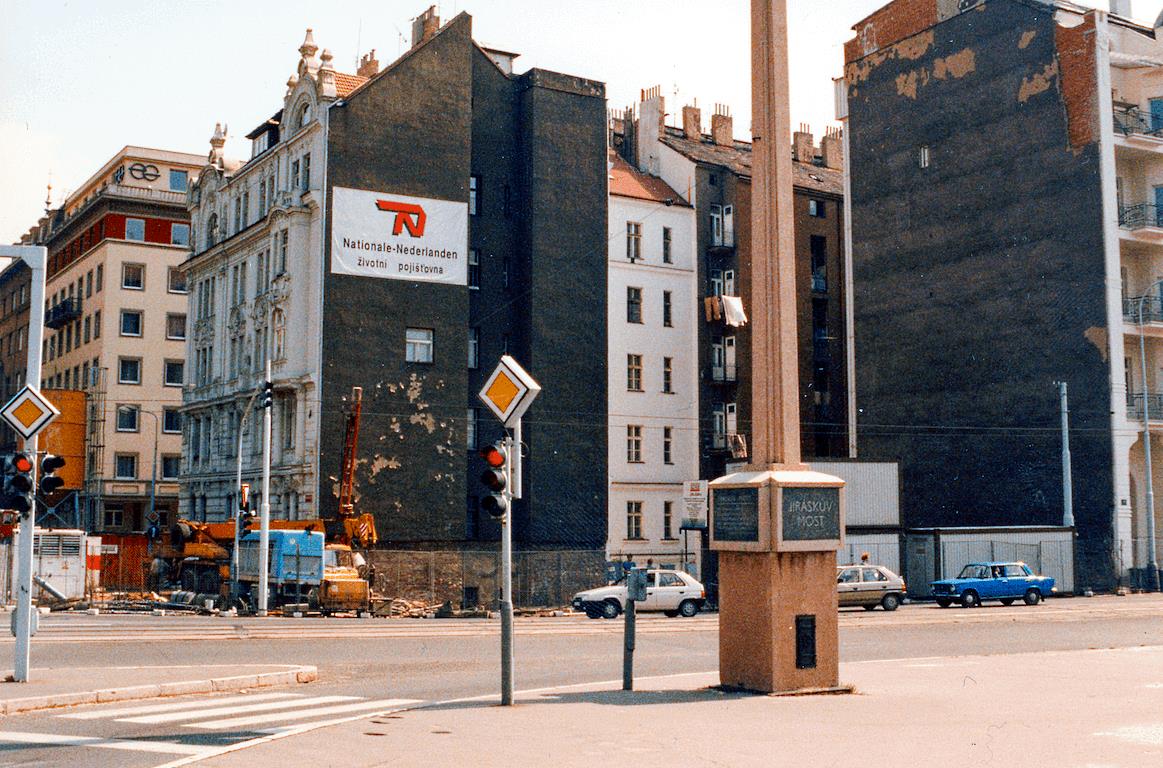
Funding for the project came from Dutch insurance company Nationale-Nederlanden, which introduced architect Gehry to the project. The idea of a library and theater was dropped in favor of offices. The first official name was the Nationale-Nederlanden Building. The interiors were partly designed by Czech- British architect Eva Jiřičná.
Following on the original plan from 1990, architects Gehry and Milunič redesigned the building in 1992, and construction began in 1994. It had its official opening June 20, 1996.
Gehry favored the name Fred and Ginger, after the Hollywood film couple Fred Astaire and Ginger Rogers. The name, however, didn’t catch on, and Tančící dům, or Dancing House, has become the common name. The building is supposed to resemble a dancing couple, with a glass-enclosed part looking like a female dancer in a dress, and the concrete tapered part is the male partner. The large metal sculpture on top of the building is called Medusa.
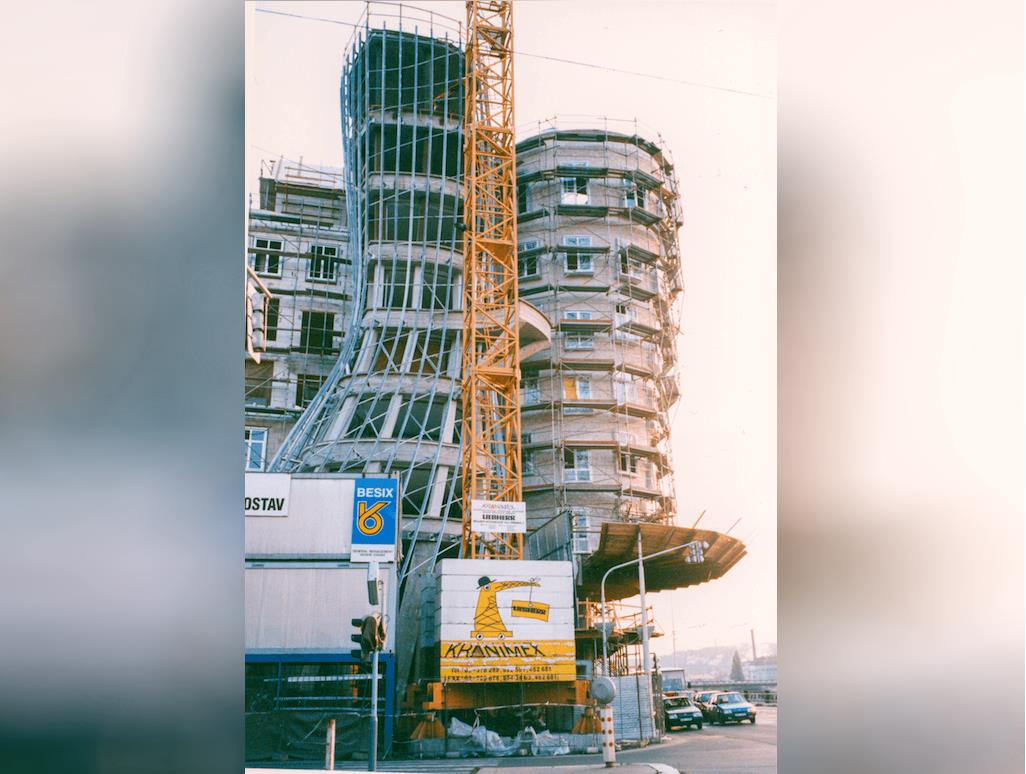
Part of the concept was to have a yin and yang, a dynamic and a static part. This was also meant to in part symbolize the transition from communism to a free society.
Nothing like the modern design had ever been built in the city, and at the time there was a popular sentiment that the new building should be in the same style as the rest of the street, which had Art Nouveau, neo-classical and other early 20th century influences.
After the building opened in 1996, it won an award in the design category in a poll by Time magazine. It has since become one of the symbols of Prague and attracts photographers on a daily basis.

As of 2013, the building has been owned by Pražská správa nemovitostí (PSN), which has sought to fulfill some of Havel’s original vision by making the building more open to the public.
In 2016, on the 20th anniversary of the completion of the building, the art gallery underwent some changes to its concept and the name. It was renamed from Art Salon S to Dancing House Gallery (Galerie Tančící dům). The space was also dedicated to exhibitions of significant Czech artists and themes, rather than contemporary art from younger artists.
A four-star hotel opened in the Dancing House in September 2016 on floors that had previously been used as part of the art gallery and for offices. The gallery now occupies part of the entry level and lower levels.
The seventh floor of the building houses the Fred and Ginger restaurant, overseen by Czech chef Ondřej Slanina. A new café has opened on the ground floor.
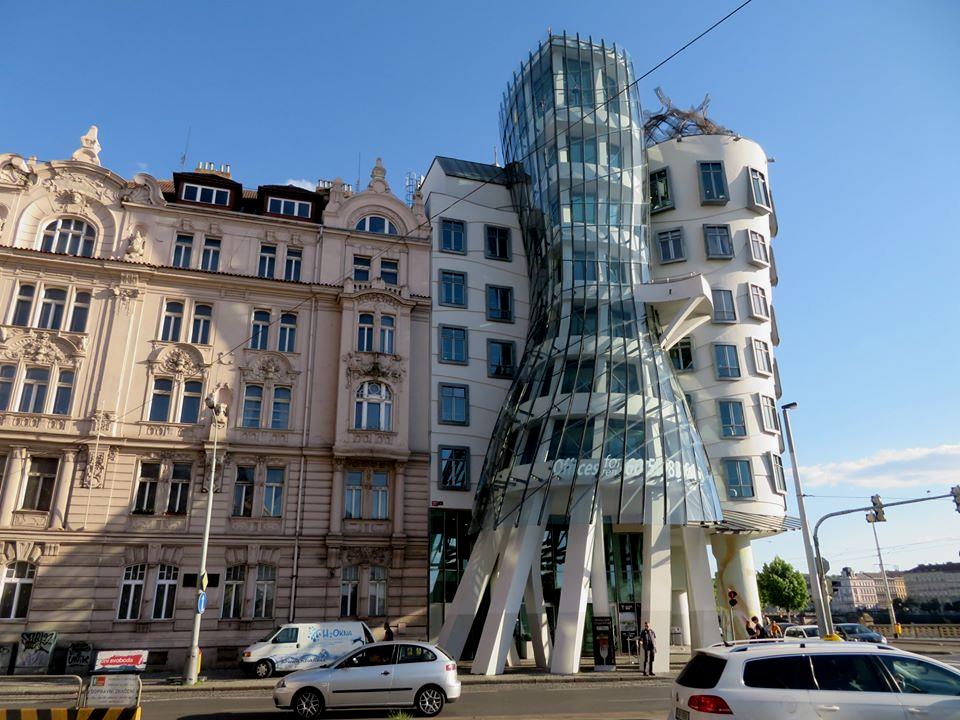
Jiráskovo náměstí, next to the Dancing House, is currently fenced off. One of the reasons is the grass there had been completely destroyed due to tourists posing to take optical illusion photos.
If someone stood at a certain spot and held their foot up, it looked like they were kicking the Dancing House in the narrow waist of the glass half, the female dancer. The idea is similar to people making photos where it looks like they are holding up the Leaning Tower of Pisa.
A new, more robust lawn that can hold up to heavy traffic will be created, and a historical fountain will be repaired. The renovations are in the planning stages.
For more information on tours, visit the Dancing House Gallery website.












 Reading time: 5 minutes
Reading time: 5 minutes 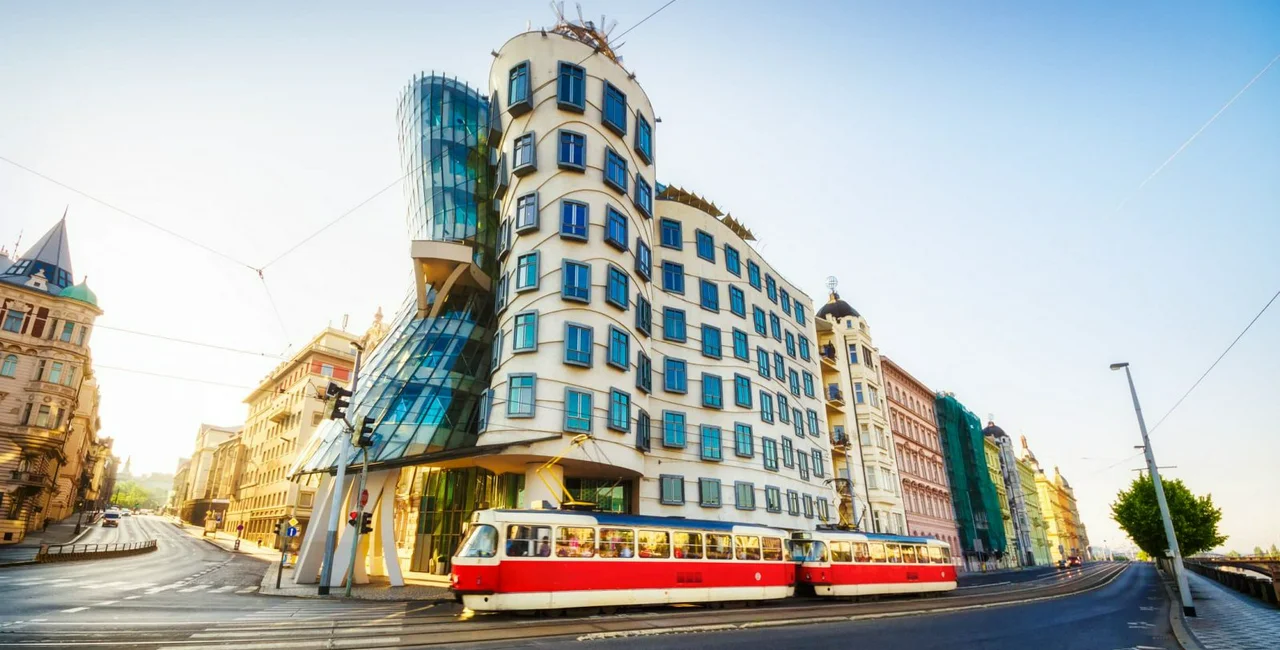


 Swedish
Swedish
 Norwegian
Norwegian
 Danish
Danish
 English
English
 Italian
Italian
























